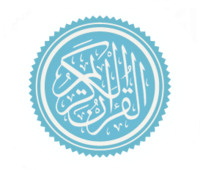Topkapi manuscript
| Quran |
|---|
 |
|

The Topkapi manuscript is an early manuscript of the Quran dated to the late 1st century / early 2nd century AH (i.e. early to mid 8th century AD)
This manuscript is kept in the Topkapi Palace Museum, Istanbul, Turkey. It was wrongly [1] attributed to Uthman Ibn Affan (d. 656), but judging from its illumination, the Topkapi manuscript does not date from the period (early first century AH) when the copies of the Caliph Uthman were written. The manuscript contains decorative bands separating the chapters and small ornamental circles separating the verses. Similar illuminations can be found in the Dome of the Rock in Jerusalem, the Umayyad Mosque in Damascus and other Umayyad monuments. The size of this manuscript is 41 cm x 46 cm. It contains more than 99% of the text of the Qur'an. With only two pages (23 verses) lacking, this manuscript is the closest to the complete text of the Quran. Mehmed Ali Pasha, Governor of Egypt, sent this manuscript to the Ottoman Sultan Mahmud II as a gift in the 19th century (CE).[2][3][4]
See also
References
- ↑ Quotes from Islamic scholars, Prof. Dr. Ekmeleddin İhsanoğlu and Dr. Tayyar Altıkulaç
- ↑ "The "Qur'ān Of ʿUthmān" At The Topkapi Museum, Istanbul, Turkey, From 1st / 2nd Century Hijra". Islamic Awareness. 2008-07-19. Retrieved 2011-10-05.
- ↑ Kodex Topkapı Sarayı Müzesi at corpus coranicum
- ↑ Mushaf Topkapi